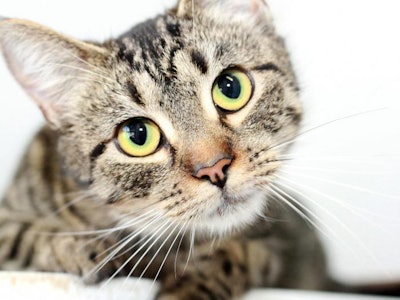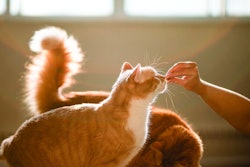
When devising a new edible pet product, including treats, foods and supplements, developers need to first decide what format that pet product will take. However, the form is limited by the function of those products in pets’ diets. In other words, the nutritional needs of a pet food create constraints on developing a complete diet that a treat or supplement would not have. Considering nutrition and biological function should be part of the first stages of new product development, Renee Streeter, DVM, DACVN, principal nutritionist for BSM Partners, during her presentation at Petfood Essentials on May 2 in Kansas City, Missouri, USA. Once the dietary goals are established, developers can consider what format would be best, instead of trying to force a nutritional square peg into a round hole.
“People want to create a treat that has effective amounts of various different ingredients,” Renee Streeter, DVM, DACVN, principal nutritionist for BSM Partners, during her presentation at Petfood Essentials on May 2 in Kansas City, Missouri, USA. “The problem is that within those formats, you have very little space for the active ingredients. So, exploring either different formats or different ingredients that might have a lower dosing level might be really helpful right at the beginning.”
The form of a new pet product, whether dry kibble, wet or raw, determines many of the available formulation options. Each format has pros and cons. Streeter discussed what advantages each format has, along with its detriments, during her presentation at Petfood Essentials on May 2 in Kansas City, Missouri, USA.
Dry pet food
“Complete and balanced dry diets are really economical, they store well, and they can be left out in the wool longer,” Streeter said.
Pros
- Most economical
- Stores well
- Can be left in bowl longer
Cons
- Less palatable than other forms
- Not considered as novel
- Perceived as less healthy
Wet pet food
“[Wet pet food] also has a very long shelf life,” she said. “It's also highly palatable, and can help prevent or manage lower urinary tract disease because that extra moisture content helps increase the amount of urine produced and creates a more dilute urine. These products have a tendency to be higher in protein and fat. That higher fat content drives a higher energy density. This can be really good for those pets that are having trouble maintaining weight or need to put weight on. But for most pets that are couch potatoes, they really don't need that higher energy density and feeding this alone may result in some unnecessary weight gain.”
Pros
- Long shelf life
- Highly palatable
- Can prevent or manage lower urinary tract disease
Neutral
- Tends to be higher in protein and fat
Cons
- More expensive
- More difficult to find a co-manufacturer
- Can’t be left in bowl
Fresh/frozen pet food
“The upside to [fresh pet foods] is that they're pretty palatable and highly digestible,” Streeter said. “There's a good pet owner perception around them that they're feeding a healthier whole-food diet. The downside is that shipping and storage logistics are very difficult and very expensive. Those costs need to be passed on to the owner and do create cost prohibitive product really, especially for larger dogs.”
Pros
- Highly palatable and digestible
- Owner perception of feeding a healthier, whole food
Cons
- Shipping and storage is costly and difficult
- More expensive/cost prohibitive
- More time consuming for owner
- Storage for owner can be an issue
Treats and toppers for pet food
“These are fun to produce,” Streeter said. “They're novel, and they're tend to be quicker to market because we don't have to make them complete imbalance. There's less labeling restrictions. And there's a growing market for these with a lot of room for innovation. The downside is that because hopefully, they're not a large portion of the docs diet or cat's diet. There's less sales potential here. In addition, because they're not balanced, it's not great for the pet because they tend to get overfed and create an unbalanced diet as a whole.”
Pros
- Novel and fun
- Quicker to market
- Less lavelign restrictions
- Growing market with much room for innovation
Cons
- Less sales potential
- Can unbalance the diet
Supplements: powders chew and functional treats
“The nice thing about these is that they can provide nutrients outside of what the complete and balanced diet can provide,” she said. “The downside is that there is extensive formulation and research time involved in these, especially when novel ingredients are being considered.”
Pros
- Provide nutrients outside complete and balanced diet
Cons
- Extensive formulation and research time
- Sourcing important

















